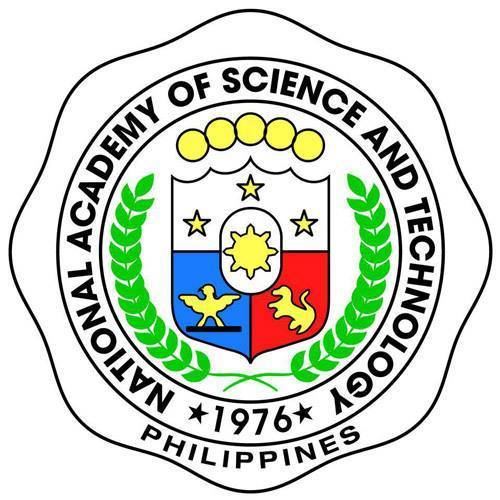Formation 1976 Official language English | ||
 | ||
Type Government Advisory Body Headquarters 3/F Science Heritage Center Bldg., DOST Complex, Gen. Santos Avenue, Bicutan, Taguig City President Acd. William G. Padolina | ||
The National Academy of Science and Technology (abbreviated as NAST) is the highest recognition and scientific advisory body of the Philippines under the Department of Science and Technology. It was created through Presidential Decree 1003-A issued by President Ferdinand E. Marcos in 1976 to honor and recognize Filipino scientists who made worthy contributions in the advancement of science and technology in the country. It also recommends individuals to be conferred the Order of National Scientist upon approval of the President of the Philippines.
Contents
History
The establishment of the National Academy of Science and Technology was a proposal of several professors from the University of the Philippines. It was endorsed by the National Science Development Board (now Department of Science and Technology) to the President of the Philippines. NAST was created through Presidential Decree 1003-A issued by President Ferdinand E. Marcos in October 6, 1976. In 1978, President Marcos named the first ten members of the academy from members of the scientific community with three of them proclaimed as National Scientist, namely: Juan S. Salcedo, Jr., Alfredo C. Santos and Gregorio Y. Zara. Through Executive Order 818 in 1982, the academy was tasked to give recommendations to the President of the Republic of the Philippines and the Cabinet on policies concerning science and technology in the country.
Mandates
The National Academy of Science and Technology is mandated:
- To recognize outstanding achievements in science and technology as well as provide meaningful incentives to those engaged in scientific and technological researches
- To advise the President and the Cabinet on matters related to science and technology
- To engage in projects and programs designed to recognize outstanding achievements in science and to promote scientific productivity
- To embark on programs traditionally and internationally expected of an academy of science
- To manage, operate and maintain the Philippine Science Heritage Center
Functions
The Academy's function is divided into three components namely, advisory, recognition and scientific Linkages.
Organization and Membership
Members of the National Academy of Science and Technology are nominated by members of the scientific community. Current NAST members deliberate on the membership of an individual following strict rules and regulations. Once admitted to the organization, members are called Academicians (abbreviated as Acd.). The academy is divided into several divisions to which an academician is a member depending on his area of expertise. The following divisions are:
- Agricultural Sciences
- Biological Sciences
- Engineering Sciences and Technology
- Health Sciences
- Mathematical and Physical Sciences
- Social Sciences
From each division of the academy, a chair is elected to form the Executive Council. A president, vice-president and secretary is elected from the Executive Council. The secretariat of NAST is headed by an executive director which implements the decisions of the Executive Council, and attends to the day-to-day affairs of the Academy. Since 2012, the NAST Executive Council is composed of:
Academicians
Members of the NAST are called academicians. As of 2014, there are 45 living academicians.
National Scientist
All National Scientist are members of the NAST. As of 2014, there are 17 living national scientists.
Annual Scientific Meeting
The academy conducts a scientific meeting every July since 1978. It gathers scientist from all over the country to discuss relevant issues related to science and technology and thus earning the distinction of the most prestigious Philippine scientific conference. At the end of the convention, NAST honors exemplary scientists from different fields and presents recommendations to the government through the secretary of the Department of Science and Technology.
36th Annual Scientific Meeting
The 2014 Edition of the Annual Scientific Meeting (ASM) focuses on three pillars of competitiveness as defined by the World Economic Forum (WEF), namely, infrastructure, information, and innovation with emphasis on the policy and governance aspects in energy, water, telecommunications, and transportation. Former Department of Trade and Industry Secretray Cesar B. Bautista gave the keynote address.
Awards
NAST also recognizes worthy contributions of Filipino scientists in the advancement of science and technology in the country during its Annual Scientific Meeting. It includes the following recognitions: Outstanding Young Scientists (OYS), The World Academy of Sciences for Developing Countries (TWAS) Prize for Young Scientists in the Philippines, NAST Talent Search for Young Scientists, NAST Environmental Science Award, NAST-LELEDFI Award for Outstanding Research in Tropical Medicine, Outstanding Scientific Papers, Outstanding Books and Outstanding Monographs.
Publications
As a promoter of science and technology, NAST also publishes books and monographs based on studies of present academicians, members of the scientific community and world-renowned scientists. Conference proceedings of their annual scientific meeting is published as the NAST Transactions.
